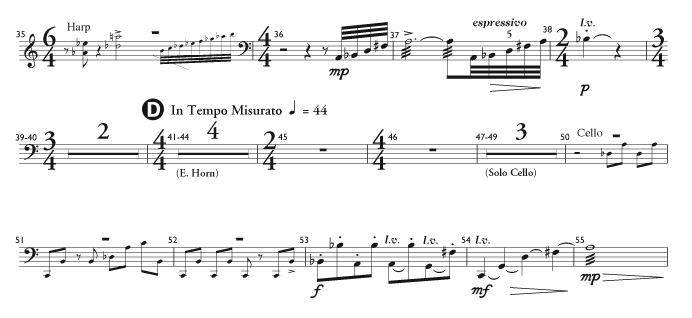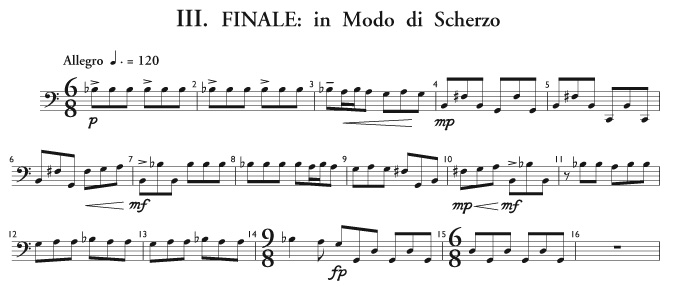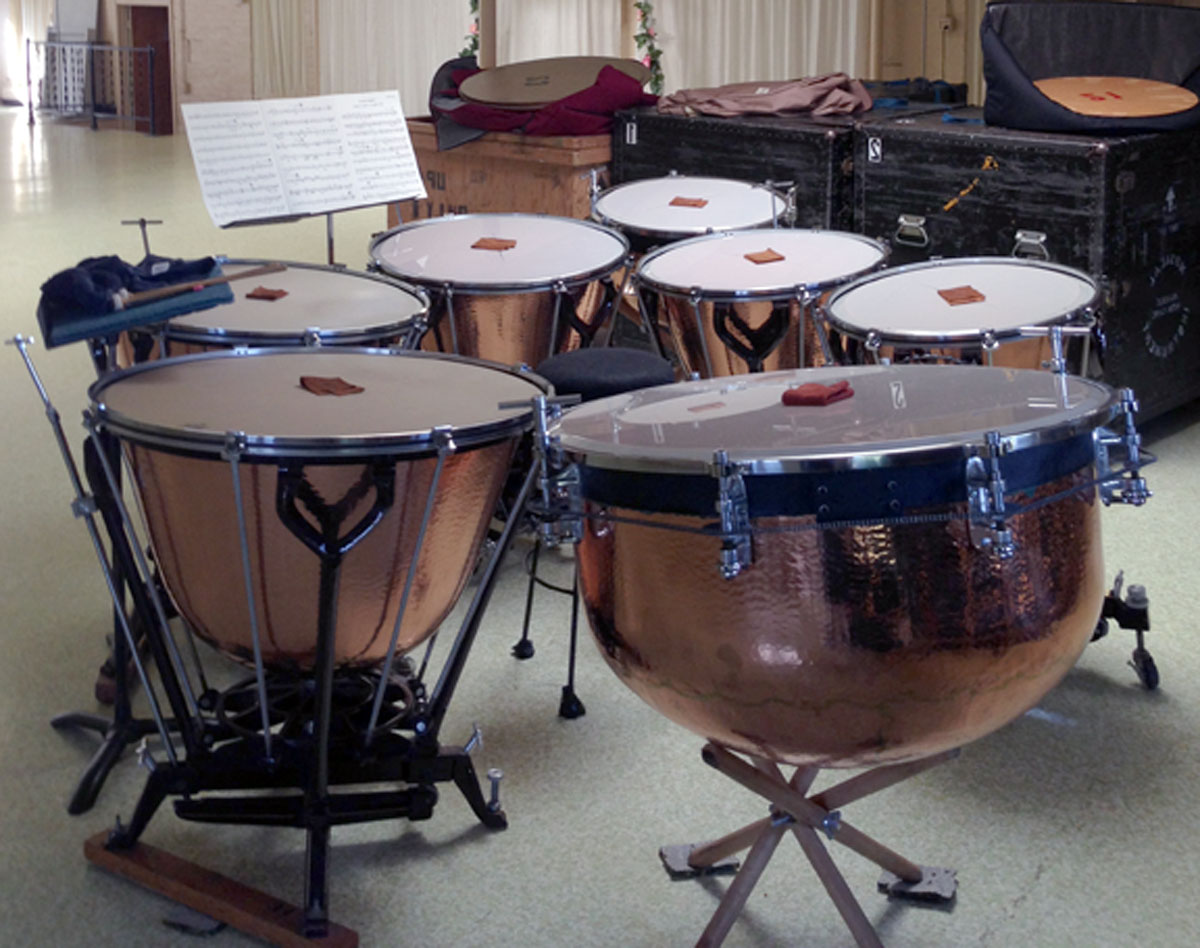David Maves — Timpani Concerto
premiered on November 23, 2014
Omaha Symphony Chamber Orchestra
Thomas Wilkins, Music Director conducting
Dwight Thomas, Timpani Solo

The original idea for this piece came from Omaha Symphony Music Director Thomas Wilkins, he was the first to suggest a commissioned piece.
Another requirement of the commission was use of only the full-time players that make up the Omaha Symphony Chamber Orchestra, which eventually led to this instrumentation:
Flutes 1 & 2 (2 doubles Piccolo)
Oboes 1 & 2 (2 doubles English Horn)
Clarinets 1 & 2
Bassoons 1 & 2
Horns 1 & 2
Trumpets 1 & 2
Trombone
Tuba
Harp
Timpani Solo
Violin 1
Violin 2
Viola
Cello
Bass
Concepts of the Piece and Stage Placement
The piece is based on an earlier work of David's, the Fantasy for Cello and Percussion (also available from
DAPrint).
There is a commercial recording of this piece available here. I also play timpani and percussion on this recording.
In early discussions about the piece, I asked David for the orchestra to have a larger role than in many concertos, and we agreed to use my complete personal collection of 7 timpani. The 3 movements of the concerto all use the Fantasy as a jumping-off point, but movements 2 & 3 are reversed in the concerto and the "Finale in Modo di Scherzo" final concerto movement is a major expansion of the Fantasy's second movement.
After the piece began to take shape David decided to place the solo timpani in their traditional orchestral position in the rear, especially since the piece has a chamber music quality much of the time. The following is from the program notes in the score:
"In composing this work I have envisioned the timpani set up in the traditional fashion at the rear of the orchestra. This allows the timpani sound to move around and through the orchestra merging and blending with that of the other instruments on its way out to the audience."
There were some issues as a result of this placement. In the hall where the performance took place the sight lines weren't good in the front half of the hall. There was a pre-concert article in the newspaper that explained the situation, and those audience members that read it were prepared to either sit towards the rear (no reserved seating) or upstairs in the balcony. The concerto was last on the program, after intermission.
Another option was proposed, a camera and screen projection setup, but it was not used at this performance.
Solo Part Examples
Here are three examples from the solo part, one from each movement:



A Few Comments
from percussionist colleagues who attended the performance. There was no newspaper review:
"Stunning. The piece will definitely be played again."
"The concerto was bizarrely beautiful."
"It was an excellent display of what timpani are capable of. I appreciated how he adapted the orchestra and orchestration to showcase what's idiomatically great about timpani while still displaying plenty of virtuosic playing."
Publication Information
The piece is published by my DAPrint publishing house. A piano reduction and solo part is now available for sale (price - $40), and the orchestra parts and score(s) are available for rental.
Perusal materials (the full score, solo part, and recording) are also available to orchestras and interested soloists, including the concert recording. Please contact me at datimp@cox.net for more information.
More Photos
Here's a photo taken after it was all over:

And this last one is at the request of the composer. It's a Photoshop alteration of the practice setup, so that it appears to be American rather than the actual German setup I used. Since many timpanists are either not familiar or not comfortable with the German setup, this alternate photo might help them get a better idea of what's involved in playing the piece:


Direct your comments or questions to:
email at:
datimp@cox.net
-- Back to the Dwight Thomas Home Page --







